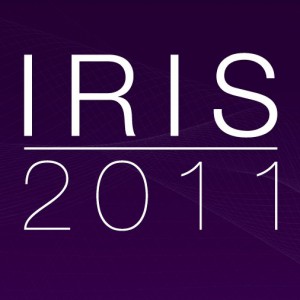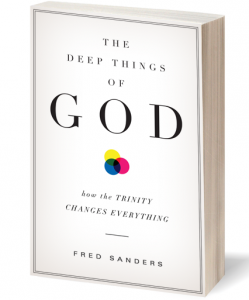 This January I’ll be teaching an intensive class on the Trinity as part of Biola’s innovative IRIS program. It’ll be a three-week class that I’ll be co-teaching with nine other Biola profs, intentionally stirring together as many academic disciplines as we can fit into one experience of general education.
This January I’ll be teaching an intensive class on the Trinity as part of Biola’s innovative IRIS program. It’ll be a three-week class that I’ll be co-teaching with nine other Biola profs, intentionally stirring together as many academic disciplines as we can fit into one experience of general education.
The 200 students who register for IRIS will get to spend time with different sets of professors. The team I’m on includes profs from English, New Testament, Psychology, Law, and Theology. We’ll also be mixing it up with another team of five professors in ways too complex to describe briefly. The whole point is to be chase our topics across all the traditional boundaries between disciplines (IRIS is an acronym for Integrated Reflection on Interdisciplinary Studies).
 In addition to joining in the general events, I’ll be teaching a theology course that is focused on the doctrine of the Trinity. I’ll teach from my new book, The Deep Things of God: How the Trinity Changes Everything, and from the Bible.
In addition to joining in the general events, I’ll be teaching a theology course that is focused on the doctrine of the Trinity. I’ll teach from my new book, The Deep Things of God: How the Trinity Changes Everything, and from the Bible.
“What’s so interdisciplinary and integrative about that,” you may ask. Well, the art history and the movies and the comic books and the diagrams, that’s what. Oh, I didn’t mention those?
Here’s the experimental part. Our Trinity class will be focused on understanding the doctrine of the Trinity by using visual thinking, moving ideas around in visual form to help us grasp the doctrine better. Of course God is not something you can directly paint, film, cartoon, or diagram, so we have to be sneaky. Here’s a brief statement of how sneaky we’re going to be in this class (I do hope to post some details from the class on Scriptorium during January):
We’ll be using film, primarily to jump-start our visual thinking processes. I don’t know any good movies about the Trinity (no, The Matrix doesn’t count), so our film experiences will be mostly eyeball calisthenics. Miyazaki’s gorgeous Spirited Away will get us going (with some “what the heck was that” explanations from Torrey prof Dr. Campbell, who grew up in Japan), and the fascinating Temple Grandin will work us through some of the implications of “Thinking in Pictures.” Torrey prof Paul Spears will help us think about different ways of knowing, using Saving Private Ryan, and Throne of Blood will chill our gores in a way Shakespeare only dreamt of doing.

We’ll be using art history to sneak up on the doctrine of the Trinity. There is a long and complicated history of iconography of the Trinity, and we will investigate that, mainly in heavily-illustrated art history lectures and discussion. There’s no need to reinvent the wheel, or make all the same mistakes that have already been made down through the ages, when we can learn from the past. We’ll look at anonymous icons, illuminated manuscripts, and folk art as well as classics like Rublev, Massaccio, Durer, and van Eyck.

We’ll be using comic books, as the great medium that commingles words and pictures in a unique way. Starting with Scott McCloud’s classic work Understanding Comics, we’ll examine the way comics put ideas together. We’ll also read my own 50-page comic book about the Trinity, Dr. Doctrine’s Christian Comix volume 3. And probably something else fun. Pogo or Calvin & Hobbes or something. No superheroes this time.

Finally, as the actual goal of the class, we’ll be using diagrams to help us understand the doctrine. The kind of visual thinking or conceptual mapping that we can do with diagrams is well suited to helping us wrap our minds around the vast and complex Biblical doctrine of the Trinity. Our jumping off point will be the diagrams scattered around in The Deep Things of God, but we’ll be trying to improve them, using some visual thinking tips from theorists like Rudolf Arnheim and Edward Tufte.

As you can see from the visual progression on this page, we’re moving from the rich and lush and uncontrollable and evocative (paintings and movies), to the clear and ordered and concrete (comics and diagrams).
Who can take this class? Biola students who need 3 units of general education. Specifically, my class is an upper-division Bible elective. If you’re not a Biola student, sorry. Stay tuned to this blog for some occasional overflow from the course. If you are a Biola student, or know one, tell them to sign up ASAP for this big slab of weirdness.
Torrey profs Paul Spears and Jamie Campbell are also doing Iris classes, and they’ll be cool, but they won’t have comic books. They’ll be about things like education and justice and stuff. Also good! But no comics.